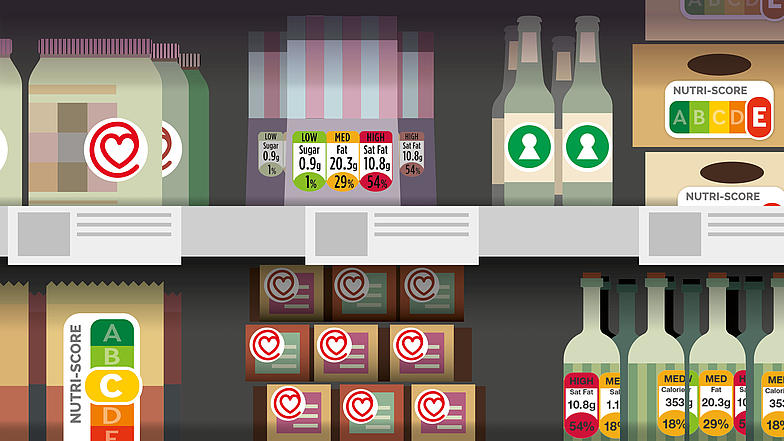The Mediterranean diet is viewed as particularly healthy and well-balanced because it is characterised by a high consumption of fruits, vegetables, pulses and (wholegrain) cereals, moderate amounts of fish and dairy products and a low consumption of meat and of products that are high in sugar, fat and salt. In addition, healthy oils like olive oil are the main source of fat. This is completely in line with the classification system used by the Nutri-Score, which gives more favourable ratings to foods that are low in fat, sugar and salt, as well as high-fibre meals, fruits, vegetables, pulses and nuts. Olive oil, like rapeseed and walnut oil, is given a yellow C, which is the best rating within the category “oils” (because even though olive oil is a relatively healthy oil, it should nevertheless be consumed in smaller quantities, e.g. in comparison to fruits and vegetables).
A few Italian politicians have said that the Nutri-Score would be an attack on the Mediterranean diet because traditionally produced products like prosciutto, Parmesan and Gorgonzola would receive poor ratings. However, these claims are misleading. The Nutri-Score simply shows the nutritional quality of these products, which are indeed very high in fat and salt and should therefore be consumed in low quantities, even in the context of a Mediterranean diet.
